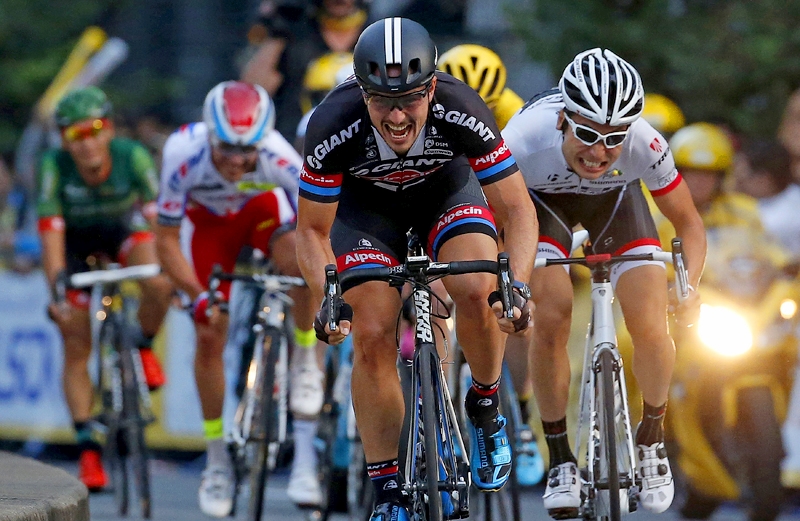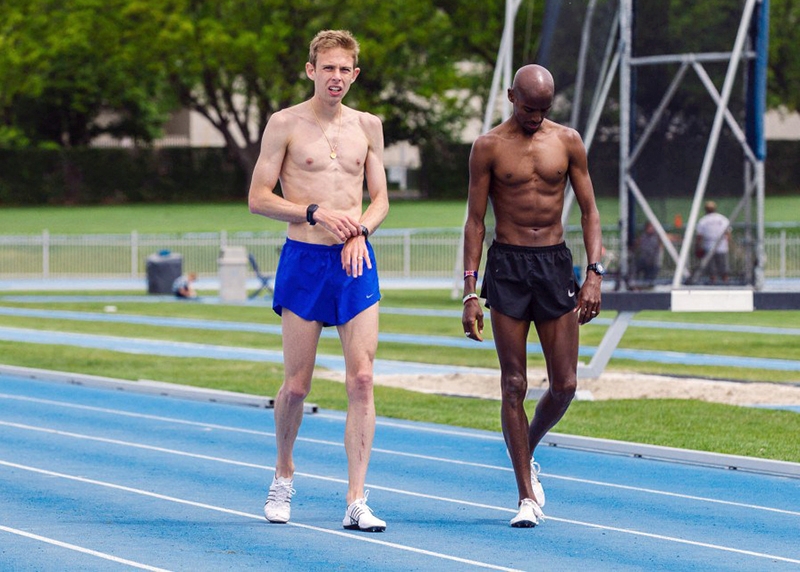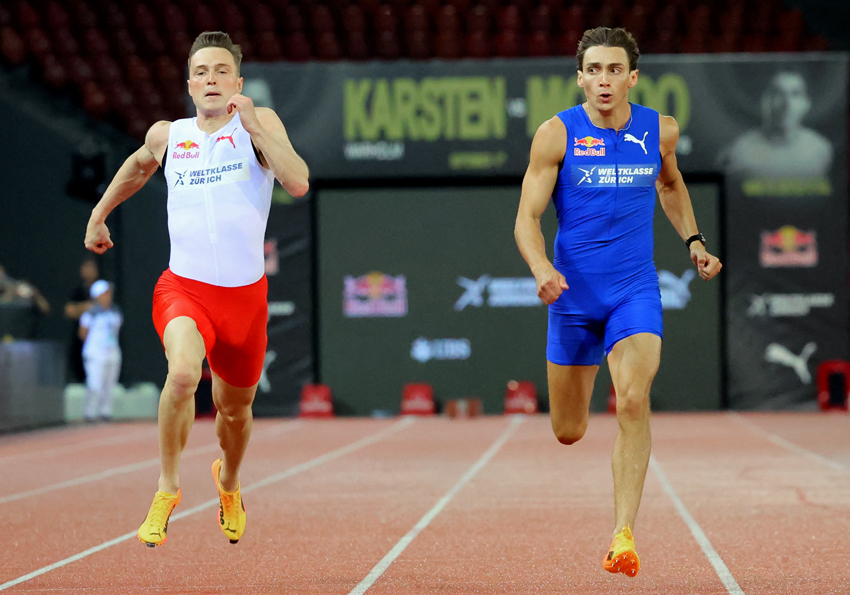You are viewing 1 of your 1 free articles. For unlimited access take a risk-free trial
Banishing cardiovascular drift: a master stroke for endurance athletes?

Andrew Hamilton explains the phenomenon of ‘cardiovascular drift’ during steady-state workouts. What is it, why is it undesirable and how can athletes overcome it to get a greater training response from their training sessions?
If you regularly use a heart-rate monitor during your workouts, you’ll almost certainly be well aware of a rather curious phenomenon that invariably occurs over the course of a longer, steady-state training session. You start exercising at a given pace, power output or workload and your heart rates initially climbs. It then reaches a plateau, which is maintained for a good few minutes. At this point, your heart and circulatory system is supplying just the right of oxygen to fuel your working muscles at that pace/effort/power.However, after 10-15 minutes or so, something odd begins to occur. Without any increase in that pace, effort or power output, your heart rate begins to slowly creep upwards again, and continues to creep up for the next 20-30 minutes or so. This is despite the fact that your oxygen consumption and perceived effort level remain constant. So what’s going on and why does this phenomenon matter?
Cardiovascular drift
The phenomenon described above is known as ‘cardiovascular drift’ (see figure 1). This cardiovascular drift (CV-Drift) is characterised by a gradual decrease in stroke volume (the volume of blood pumped during each heartbeat) but a corresponding increase in heart rate (the number of heartbeats per minute). Since the total blood pumped per minute (known as cardiac output) is given by the formula stroke volume x heart rate, a rise in heart rate combined with a proportional drop in stroke volume means that during cardiac drift, the total cardiac output doesn’t change. This is exactly what you’d expect; total cardiac output only needs to increase if muscles need to consume oxygen at a greater rate (ie increase in pace, workload, power etc). But as we have observed, cardiac drift occurs at the SAME workloads.Figure 1: The onset of cardiovascular drift
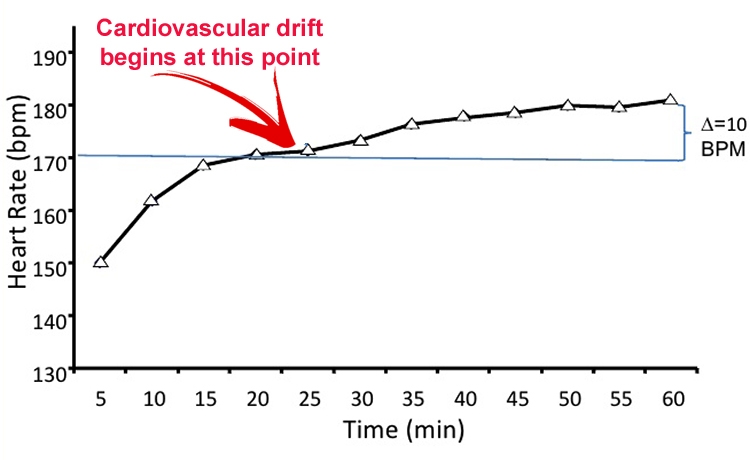
Why does CV-Drift occur?
CV-Drift usually appears after 10th minute of constant-load, prolonged moderate-heavy to heavy exercise – ie around about the aerobic threshold(1-3). This equates to the kind of training you would perform to develop your maximum sustainable speed (threshold pacing). But why does CV-Drift occur? There’s no absolute consensus about this. One traditional explanation is that CV-Drift occurs largely due to heat accumulation in the body, especially in warm conditions. In an effort to lose excess heat, some blood is directed to skin tissue, which alters the dynamics of heart regulation(4). Another explanation is that CV-Drift occurs as a result of the release of a hormone called catecholamine, which is released as part of the body’s ‘fight or flight’ responses to physical stress(5).Why does CV-Drift matter?
The phenomenon of CV-Drift has, until recently, been regarded very much as a casual observation that holds little value - and at worst as evidence that heart rate is an unhelpful biometric. After all, if total cardiac output remains unchanged, a drop in stroke volume should be neither here nor there. However, while training to maximise total cardiac output is important, the issue of CV-Drift still has important implications. That’s because research has demonstrated that the time an athlete spends at maximum stroke volume is one of the most important training stimuli for boosting endurance performance(6-8).An athlete training at or near race pace for a given period of time might expect to generate their maximum stroke volume for the whole of the period of time spent training at that intensity. But research shows that after the first 10-15 minutes of such an effort, CV-Drift means that stroke volumes can decrease by up to 20% from the maximum value generated during the first 10-15 minutes. In other words, train for an hour at near lactate threshold, and you only get the first 10-15 minutes at maximum stroke volume; the remaining 45-50 minutes would generate a stroke volume well below maximum, reducing the training stimulus considerably.
There’s another dimension to this issue too. Research has demonstrated that while elite athletes need to work at or near to lactate threshold (90%+ of aerobic capacity) to generate maximum stroke volume, non-elite athletes can achieve maximum stroke volume at much lower percentages of their maximum aerobic capacity – as low as 40-80% of maximum(9). As with elite athletes however, only the first 10-15 minutes will elicit this response; thereafter CV-Drift will reduce stroke volume considerably. For non-elite athletes training at a lower percentage of maximum aerobic capacity (eg for an hour or more) is quite doable, but only the first 10-15 minutes will produce the maximum training stimulus.
Maximising stroke volume training stimulus
At this point, you might be thinking that this is all very well, but it’s a bit theoretical. However, it’s not, because understanding the nature of CV-Drift allows us - in theory at least - to modify training routines to maximise the amount of time spent at maximum stroke volume, thereby increasing training stimulus and endurance performance. One way of achieving this would be to break up a continuous period of steady-state training into discreet segments of 10 minutes, with a short break in between. In each of these 10-minute segments, the athlete is effectively starting up all over again, so achieves near maximum stroke volume each time for the whole 10 minutes. Repeating six segments would result in a total of 60 minutes spent at maximum stroke volume. This contrasts with a continuous hour at the same intensity; although the first 10-15 minutes would achieve maximum stroke volume, the remaining 45-50 minutes would not, resulting in a reduced training stimulus. But does this kind of training structure work in practice?New research
The answer to that question has been unknown up to now. However, a new study published last month suggests that training CAN be successfully manipulated to maximise time at stroke volume max, with all the potential benefits that can bring(10). To do this, seven well-trained male cyclists volunteered to take part in the study. Following familiarisation sessions, the cyclists underwent two trials, each consisting of 30 minutes of training on a cycling ergometer, with the intensity set at 60% of maximum aerobic capacity (moderate intensity). The total work performed by the cyclists was identical in both trials; however, the two trials differed as follows:- In one trial, the cyclists rode continuously at 60% of maximum aerobic capacity for 30 minutes.
- In the other trial, the cyclists rode three 10-minute segments at 60% maximum capacity, with each separated by a 5-minute rest period.
To try and make the study as rigorous as possible, the trials were conducted after the competition season ended in order to minimise any residual training effects of periodisation. In addition, testing took place at the same time of the day to minimise any effect of circadian rhythm – ie the sleep/wake cycle - variance for each volunteer (the circadian rhythm is known to affect the cardiovascular system). Also, since fluid intake and particularly dehydration can affect CV-Drift, fluid intake was standardised and all participants consumed approximately 300mls of water one hour before each trial experiments. Moreover, they were requested not to take part in any exhaustive exercise, or to consume any caffeine-containing drink or food during the period of the study.
What they found
When the data was analysed, a clear pattern emerged. During the continuous 30-minute exercise trial, there was substantial CV-Drift. This was characterised by a progressively decreasing stroke volume after around 12 minutes of exercise, which was accompanied by a commensurate increase in heart rate. The overall effect was that total cardiac output remained constant (as you would expect).During the three x 10-minute trial however, the CV-Drift effects were minimised. Although there was a small decline in stroke volume, the intermittent training mode provided a significantly greater stroke volume response throughout the workload periods (averaging 145mls per beat compared to less than 140mls per beat during continuous exercise – see figure 2). More importantly, the time at maximum stroke volume was greatly enhanced in the intermittent trial, accumulating 10.0 minutes at maximum stroke volume. This compared with just 1.5 minutes spent at maximum stroke volume during the 30-minute continuous trial.
Figure 2: Stroke volume and heart rates in continuous vs. intermittent exercise

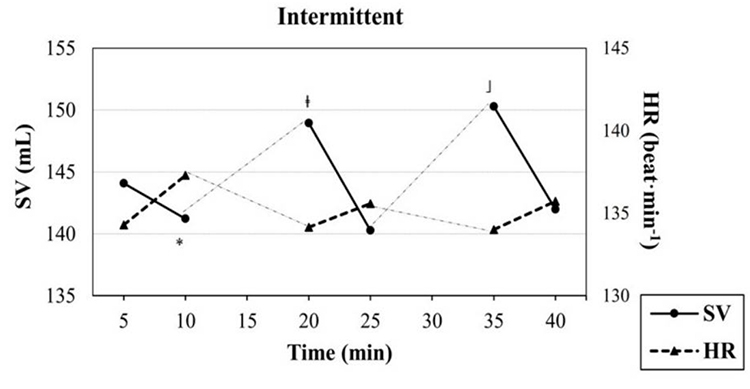
Top: continuous; bottom: intermittent. Solid lines = strove volume (SV). Dotted lines = heart rate (HR).
What do these findings mean for athletes?
In recent years, exercise physiologists have established that one of the most important acute training effects for increasing endurance performance derived from increasing the amount of time spent at maximum stroke volume during training sessions(11). These results are important because this study is the first to show that aerobic intervals can prevent CV-Drift by increasing stroke volume response, maximising the accumulated time spent at ‘stroke-volume max’ during a training session.Because it’s such a new concept, there are still a lot of unknowns about this training mode. For example, we don’t know how short the rest intervals can be in between the 10-minute efforts. In the study above, researchers were obliged to use 5-minute periods of rest due the requirements of the nitrous oxide breathing system that was used to assess stroke volume. It may be that shorter rests still elicit good stroke volumes in the work intervals, but we don’t have that data. Also, while we know that maximising stroke volume during training sessions provides one of the most important acute training effects for increasing endurance performance, no studies have be carried out to determine how this mode of training compares with other modes over the longer term. However, for the reasons given below, sessions that aim to maximise accumulated time at stroke-volume max could have a lot going for them.
A gentler way to train
As the intermittent mode of exercise used in this study amounts to a kind of interval-training session, it’s reasonable to ask whether this is just another form of interval training? In terms of its structure, this is true, but there are important differences. Most interval sessions are aimed at improving the ability to sustain high intensities for longer. As such, they are intense and target specific energy systems – in particular the lactate system – in order to improve the necessary muscle biochemistry, to make these systems more efficient.The training mode employed in this study however is targeted at maximising the accumulated time at stroke-volume max. Remember, the cyclists only cycled at 60% of maximum aerobic capacity in each 10-minute interval. This is physiologically quite different to most interval sessions which involve intensities of 85-110% (depending on interval length) of maximum aerobic capacity. When you take into account the relatively long rest periods in between the relatively low-intensity 10-minute intervals, the overall effect physiologically is very gentle indeed. This makes it easy to perform while requiring minimal recovery. In other words, this kind of training mode could be ideal for maintaining or building fitness in specific circumstances such as:
- *As an adjunct within a routine training programme.
- *After intense periods of training or racing when an in-depth recovery is needed.
- *When tapering for a race, where you need to arrive at the start line as fresh and as fit as possible.
- *When returning to sport after a layoff or injury.
- *During the off season, where you take an extended break but want to minimise fitness losses.
Do these findings mean that athletes should swap traditional modes of interval training for stroke-volume max training? Of course not – intense intervals are an essential part of training the muscles to work at or near to maximum capacity (ie in race conditions) for extended periods of time. However, stroke-volume max training may well provide athletes with an additional tool to increase training response while minimising fatigue and maximising recovery – exactly what’s needed for setting that new PB!
References
- Acta Physiol. Scand. Suppl. 1960;49:1–92
- Acta Physiol. Scand. 1967 doi: 10.1111/j.1748-1716
- Acta Physiol. Scand. 1964;62:240–255
- Sport Sci. Rev. 2001;29:88–92
- Appl. Physiol. 1999;86:799–805
- Sports Sci. Med. 2014;13:393–396.
- Sports Med. 2013;43:313–338.
- Sci. Sports Exerc. 2004;36:1357–1363
- J. Sports Med. 2005;39:190–195
- Sports (Basel). 2018 Sep; 6(3): 98
- Sports Med. 2013 May; 43(5):313-38
Newsletter Sign Up
Testimonials
Dr. Alexandra Fandetti-Robin, Back & Body Chiropractic
Elspeth Cowell MSCh DpodM SRCh HCPC reg
William Hunter, Nuffield Health
Newsletter Sign Up
Coaches Testimonials
Dr. Alexandra Fandetti-Robin, Back & Body Chiropractic
Elspeth Cowell MSCh DpodM SRCh HCPC reg
William Hunter, Nuffield Health
Keep up with latest sports science research and apply it to maximize performance
Today you have the chance to join a group of athletes, and sports coaches/trainers who all have something special in common...
They use the latest research to improve performance for themselves and their clients - both athletes and sports teams - with help from global specialists in the fields of sports science, sports medicine and sports psychology.
They do this by reading Sports Performance Bulletin, an easy-to-digest but serious-minded journal dedicated to high performance sports. SPB offers a wealth of information and insight into the latest research, in an easily-accessible and understood format, along with a wealth of practical recommendations.
*includes 3 coaching manuals
Get Inspired
All the latest techniques and approaches
Sports Performance Bulletin helps dedicated endurance athletes improve their performance. Sense-checking the latest sports science research, and sourcing evidence and case studies to support findings, Sports Performance Bulletin turns proven insights into easily digestible practical advice. Supporting athletes, coaches and professionals who wish to ensure their guidance and programmes are kept right up to date and based on credible science.
